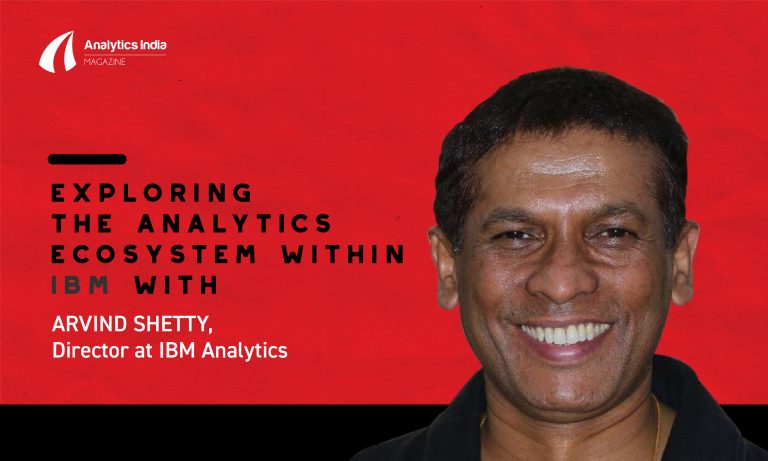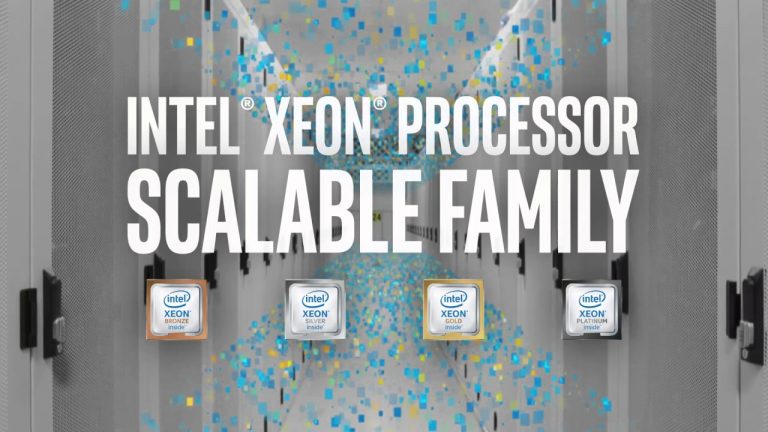2018 was a landmark year for cloud business in India, with enterprises moving away from the “one-cloud-fits-all approach” and moving towards a multi-cloud or hybrid approach. Most companies were seen choosing multiple cloud providers and clouds such as public, private, software-as-a-service, to best meet their needs. As most companies are integrating cloud with existing IT to get more value, we had a detailed chat with Subram Natarajan, CTO of IBM India to understand trends that are relevant for the Indian enterprises and give insights into how cloud adoption is evolving in India.
Analytics India Magazine: How did the cloud business in India grow in 2018? How did it fare amidst the crucial merger and acquisitions witnessed in cloud space?
Subram Natarajan: Across our segments, our strategic imperatives revenue for the year was up 9% to about $40 billion. Within that, our cloud revenue is over $19 billion, and we exited the year with an annual run rate for cloud delivered as a service of over $12 billion which is up 21% over last year. We are continuing to deliver innovation in high-value areas. For example, in the Q4 2018, we introduced AI Open Scale a platform to manage the lifecycle of all forms of AI models and Multicoloured Manager service to deploy and manage complete applications, in any cloud environment. We are also adding innovative services to our cloud portfolio, like the world’s first commercial quantum computer available on the IBM Cloud. All of this is a validation of our hybrid, open approach to cloud and we have a strong foundation from which to drive synergies across the business with the addition of RedHat.
India continues to be a key growth market for the IBM Corporation. In 2018, we witnessed positive growth across our strategic imperatives including cloud in India, with clients across vertices including BFSI, Retail, Automotive, Telco turning to IBM Cloud for their Digital transformation journey. In addition, over 1200 start-ups are benefitting from the Startup with IBM initiative, where IBM provides start-ups with free cloud credits on IBM Cloud Solutions worth $120,000 annually, provides technical mentoring and go-to-market support.
AIM: As more enterprises are shifting their approach from ‘one-cloud-fits-all approach’ to multi-cloud and a hybrid approach, is it going to prove beneficial in the long run? Or are there more disadvantages in store?
SN: Hybrid multi-cloud architectures will replace the ‘one-cloud-fits-all’ approach. Businesses are seeking to drive value from the integration of public and private clouds by taking the hybrid multi-cloud approach. The approach uses a combination of on-premises, private cloud and public cloud architecture, with the best-in-class resources from different cloud vendors. A hybrid approach enables teams to run applications across private, dedicated and multi-tenant public cloud infrastructures, while a multi-cloud approach embraces multiple vendors to support a breadth of enterprise workloads.
A report by IBM highlights that by 2021, 98% of organisations plan to adopt multi-cloud architectures, but only 41% have a multi-cloud management strategy and just 38% have procedures and tools to operate a multi-cloud environment. So, we will see IT organisations undergo a culture shift in the way that they work and require teams equipped with new skillsets. The approach will create job titles such as a cloud service broker, cloud architect and cloud automation engineer and it will be increasingly commonplace to manage the changing environments.
AIM: How does the cloud enable more interoperability of platforms and data?
SN: As hybrid multi-cloud architectures replace the ‘one-cloud-fits all’ approach, we believe that cloud skills and culture will be key to cloud adoption. As organisations adopt the multi-cloud approach, IT organisations will undergo a shift in thinking IT, more and more as a service. Traditional hardware-centric IT data centre functions such as servers, storage and the network will become increasingly software driven to function within the new cloud frameworks. Secondly, we will see developers focussing proactively on security and integrate security into every facet of application design and deployment will provide greater application visibility, control and protection. Third, most companies will embrace the concept of open source to help them avoid lock-in and benefit from the interoperability of applications, platforms and data.
AIM: Cloud is like a force multiplier for companies, helping them accelerate AI-centric solutions? How will the adoption evolve in India in the coming years?
SN: 2018 was an incredible time for cloud computing. Its impact on customer experiences, business processes and models as well as workforce innovations was undeniable. We saw increased use cases of customers leveraging multiple clouds to enable innovation than ever before. However, the landscape will continue to change and evolve.
Most enterprises will leverage a nuanced approach towards legacy applications. This is the year enterprises will need to recognise and address the glaring reality that it’s not just as simple as lifting and shifting applications; it will require careful planning and significant resources to effectively tackle the legacy application behemoth.
Data transparency across platforms will become imperative. Unleashing the value of data by bringing out insights and integrating those with the business applications will be yet another natural evolution dimension in the cloud. It is also important to ensure 24*7 access and that it is everywhere. This is vital to ensure that the cloud is providing access anytime and anywhere to businesses, both large and small.
AIM: How did the RedHat acquisition bolster the company’s portfolio and put it in front-runner in the space of cloud and AI for 2019?
SN: The next chapter of Cloud Computing – hybrid multi-cloud opportunities are estimated to be $1 trillion by 2020, and the Red Hat acquisition positions IBM as the #1 company to address those opportunities. From a value perspective, in addition to the growing RedHat business itself, we see an opportunity to lift all of IBM by leveraging more of our own IBM Cloud, and by selling more of our analytics and AI capabilities on OpenShift across multiple platforms. And as clients proceed on their journey to get more business value from the cloud they need more services to help from digital design to app modernisation, to native app development, to management of hybrid cloud environments and we are best placed to offer all these end-to-end. In addition, we continue to build, nurture and grow a thriving and effective ecosystem where our partners can provide solutions, services, and value-based skills to enable their client’s success.
AIM: How is IBM diversifying their cloud portfolio? What is your strategy going forward in 2019?
SN: Today, a majority of Fortune 500 companies trust us to transition them to cloud, since we are well versed with industry, technology, their businesses and unique needs. IBM’s cloud strategy is grounded in helping clients securely bridge these workloads and associated data to the cloud by offering clients choice and flexibility in all the ways – on-premise, private, public cloud and multiple clouds. We launched IBM Cloud Private last year to enable companies to create on-premises cloud capabilities similar to public clouds. Since then, more than 300 clients are using, including NZ Police, Mangalore University, SKC&C, and Five9. We have invested in technology to acquire nearly 60 companies in the past years, with most of them in the cloud/analytics space (from The Weather Company to Cloudant to Clearleap). With more than 7,000 cloud technology patents, we are significantly ahead of our competitors in the areas of cloud, analytics and security.
We remain committed to offering businesses a highly flexible, open, hybrid cloud capability, which will allow them to deploy and move data and applications across private and public environments securely. Our continued focus on innovation will help our customers gain ready access to leading industry cloud-based services, such as AI, Blockchain, Security and Quantum. As clients adopt IBM Cloud to streamline business process and workflow expertise, secure, responsible management of enterprise data will remain a priority.
AIM: The cloud AI interdependency has led companies to invest in providing an additional layer of machine learning tools. How is this implemented in IBM?
SN: Our belief is that AI and Cloud have a natural symbiotic relationship that allows them to amplify the outcome. That is why a majority of the AI is offered as a service through IBM Cloud. For example, if one wants to implement a simple speech-to-text algorithm it is just a cloud service call away when developed on IBM Cloud. This removes the need to have elaborate setup separately for tools and the ensuing need to manage the same. As newer innovative services get introduced, it provides an opportunity to cross-leverage these AI services easily. For example, a blockchain application developer need not worry about installation of ML tooling, yet can easily incorporate AI services within the application.
AIM: Business leaders are concerned about workloads in multi-cloud environments. How can this challenge be resolved?
SN: In mid-October 2018, IBM unveiled the world’s first multi-cloud management technology to make it easier to manage, move and integrate apps across different cloud computing infrastructures with increased visibility of business processes, governance and security. We continue to address multiple challenges that the multi-cloud adoption poses by actively committing resources towards the emerging hybrid multi-cloud landscape which we see essential for unlocking deeper and widespread cloud usage by businesses and placing ourselves at the forefront of that industry.
IBM has nearly 60 global cloud data centres in 19 countries, and users can deploy into 6 regions and 18 availability zones globally. We have 13 cloud garages globally, which catalyses the design and development of applications with the more definitive business outcome.
Companies are concerned about the secure portability of data and workloads across cloud environments, about consistency in management and security protocols across clouds, and in avoiding vendor lock-in. While we continue to invest and grow the world’s largest cybersecurity and data protection business, the combination of IBM and Red Hat will help us accelerate addressing the issues of security further. IBM respects the privacy and security of its client’s data, we never sell it and we don’t use it to train AI.
Another measure of our commitment in this regard is evident through our offering: the first ever cloud services with mainframe-level encryption for the most intensive workloads.



















































































